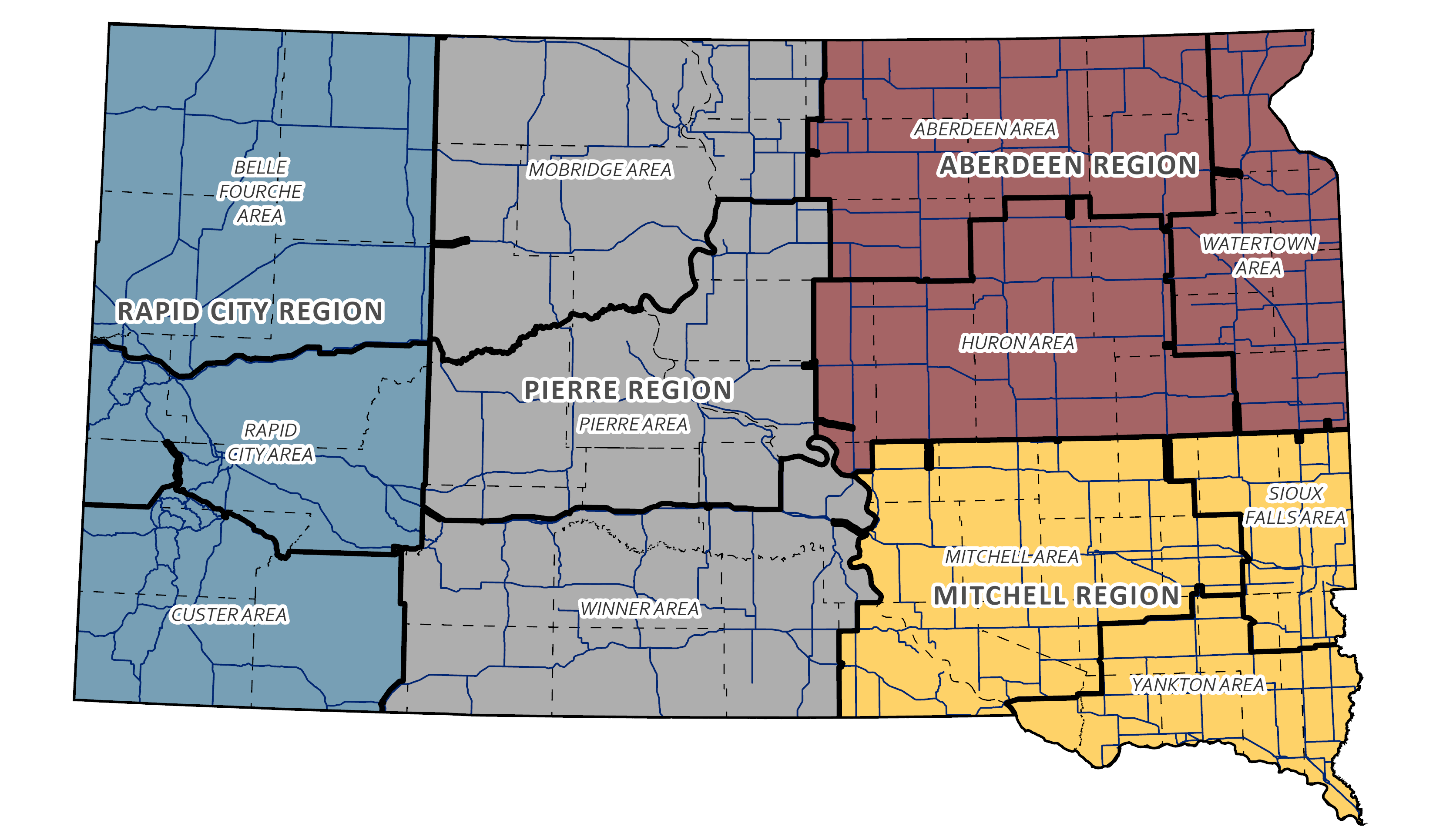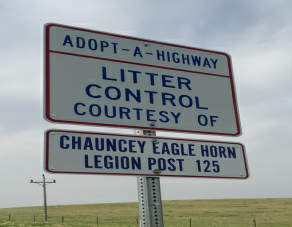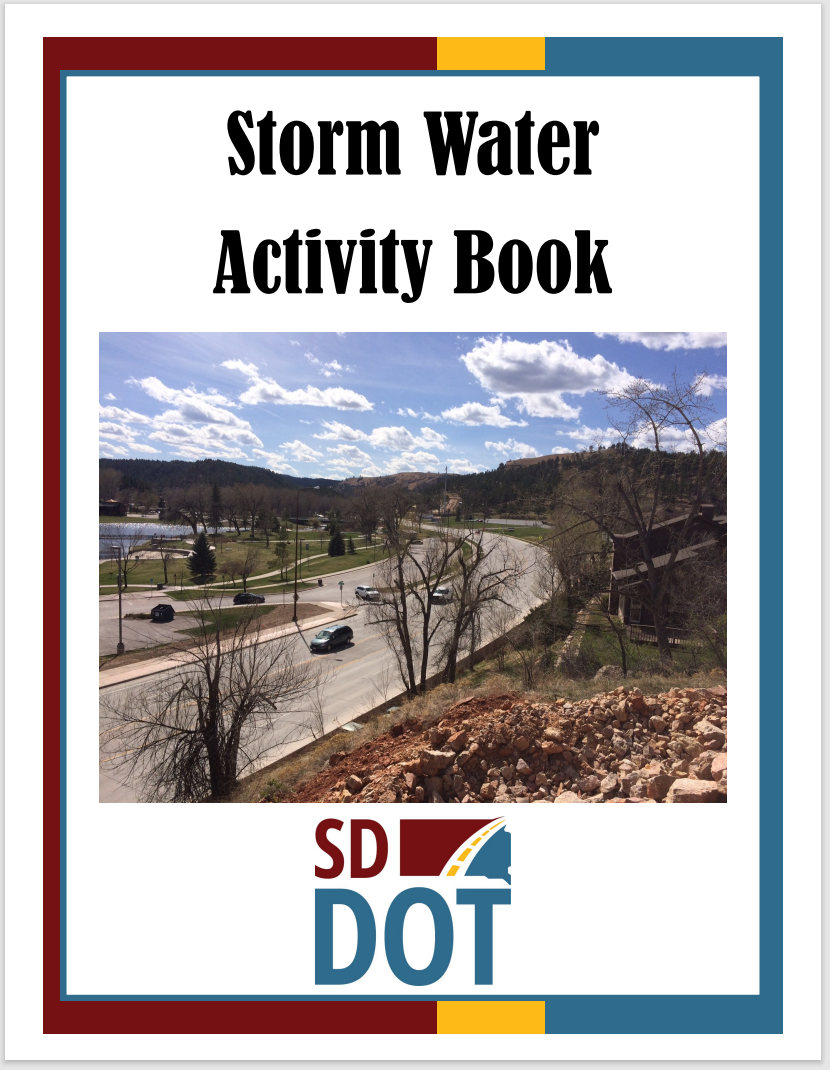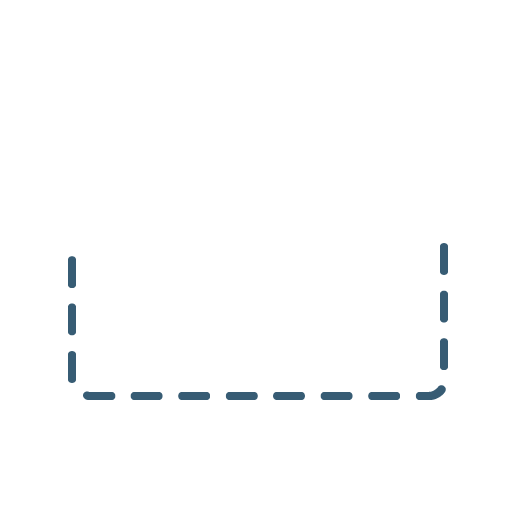Stormwater
The South Dakota Department of Transportation (SDDOT)is committed to conducting activities in a manner necessary to preserve and protect South Dakota's soil and water resources. This includes designing, implementing, inspecting, maintaining, and enforcing protective storm water measures for all construction projects and regulated separate storm sewer systems. The SDDOT will accomplish this in accordance with the U.S. Environmental Protection Agency's (USEPA) Storm Water Phase II regulations → implemented by the South Dakota Department of Environment and Natural Resources (DENR).
The storm water regulations are intended to reduce the amount of pollutants entering lakes, wetlands, streams, and rivers as a result of runoff from industrial facilities, construction sites, and urban areas. Land disturbing activities, such as road construction, can increase the number of un stabilized areas which become more vulnerable to erosion. Land development increases the amount of impervious surface area within a watershed. Rain or snow melt runoff wash over these areas, collecting pollutants as it gains in volume and velocity. Storm water runoff can harm surface water quality by changing natural flow patterns, and by increasing velocity, pollutant concentrations and sedimentation. Common pollutants in storm water runoff include oil and grease from road and parking lots, sediment from construction sites, pesticides from lawns and discarded trash, such as cigarette butts, paper wrappers, cans and plastic bottles.
Storm Water Phase I MS4s
SDDOT Pocket Guide, Erosion & Sediment Control
SDDENR - Storm Water Phase II - Storm Water Permit for Construction Activities →
Any construction activity that disturbs one or more acres must submit a Notice of Intent (NOI) for coverage under the Phase II storm water general permit for construction activities 15 days prior to construction. Sites smaller than 1 acre that are related to a larger scale plan or project may also need a permit if the total plan meets the minimum 1 acre requirement. Pertinent construction activities requiring coverage under this permit include:
- Clearing, grading, or excavation;
- Road building;
- Construction of residential, commercial, and industrial buildings;
- Installing pipelines, cable lines, and phone lines; and
- Demolition activities.
A Notice of Termination (NOT) must be submitted after the permitted site is stabilized. A site is considered stabilized if 70% of the site is covered by established vegetation.
A Storm Water Pollution Prevention Plan (SWPPP) must be completed prior to start of construction.
Storm Water Phase II - Storm Water Permit for Industrial Activities - This general permit authorizes all new and existing storm water discharges associated with industrial activity for nine categories. These categories are explained within the general permit on the SDDENR website.
Storm Water Phase II - Storm Water Permit for Municipal Storm Sewer Systems (MS4s) (SDDENR)
The Storm Water Phase II Rule extends coverage of the NPDES storm water management program to certain "small" MS4s. Phase II takes a slightly different approach than Phase I as to how the storm water management program is developed and implemented. A small MS4 is any MS4 not already covered by the Phase I program as a medium or large MS4. The Phase II program is designed to accommodate a general permit approach using a Notice of Intent (NOI) as the permit application. The Phase II Rule automatically covers all MS4s officially designated as urbanized areas that reflect populations between 10,000 and 100,000. The SDDOT is included in the MS4 designation as it has shared storm water systems responsibilities within the municipalities. The designated MS4s in South Dakota include:
Storm Water Phase II MS4 Entities
- Aberdeen
- Huron
- North Sioux City
- Pierre
- Sturgis *
- Watertown
- Pennington County *
- Brookings
- Mitchell
- Rapid City
- Spearfish
- Vermillion
- Yankton
All covered entities, including DOT, were required to submit a Notice of Intent (NOI) and a Storm Water Management Plan (SWMP) by March 10, 2003 to comply with the state-issued general permit. The SDDOT Storm Water Management Program (SWMP) applies to its many miles of right-of-way and roads, rest areas, weigh stations and other properties throughout defined urbanized areas within South Dakota.
A SWMP consists of the following six minimum control measures as identified by the EPA:
A SWPPP shall be developed for each facility covered by the storm water program and shall be complete prior to construction.
SDDOT has developed SWPPP guidelines to assist with the development and implementation of project specific SWPPPs. The format adopted by SDDOT is contained in the following document.
SDDOT SWPPP Template
A SWPPP includes the following:
- Narrative, plan sheets, and construction details for erosion and sediment control.
- Description of the construction activity.
- Description of the potential for discharge of sediment and other pollutants from the site.
- Identification of the person responsible for implementing the SWPPP.
- Narrative describing the timing of installation of erosion and sediment control measures.
- Site map showing the location and type of temporary and permanent erosion control Best Management Practices (BMP's).
- Standard plates and/or specifications for the BMP's used for the project.
- Site map with existing and proposed grades with direction of storm water flow information before and after the project.
- Site map showing impervious surfaces and soil types.
- Site map showing the location of areas not to be disturbed.
- Site map showing the location of construction phasing.
- Site map showing all surface waters (streams, lakes, wetlands) within 0.5 miles from the project boundaries that will receive storm water runoff from the site during or after construction. This can also be shown with an arrow and distance note if it does not fit on the plans.
- Methods used for final stabilization of all exposed soil areas.
- Information related to conformance with wetland permits (if applicable), the need for environmental review or results of such review, impacts of discharges on endangered or threatened species, and impacts of discharges on historic places or archeological sites.
- If working in area with a water body that has a Total Maximum Daily Load (TMDL), measures must taken to ensure that discharges are in conformance with the TMDL. TMDL information is located on the DENR TMDL website.
Storm Water, Erosion, and Sediment Control Inspection Report DOT-298 (12/18) is used for inspections on structural sediment and erosion controls at SDDOT project sites. Additionally, this form documents project compliance with the SWPPP and SD General Permit for Construction Activities. More information available at:
http://denr.sd.gov/des/sw/stormwater.aspx
According to the general permit, inspections must be conducted by qualified personnel every 7 days. It is possible for the inspection to fall on weekends and/or holidays. During winter conditions, inspections should be conducted monthly.
Four specific areas are identified for inspection:
- All areas which have been disturbed and have not reached final stabilization of 70% vegetative cover.
- All erosion and sediment control structural BMPs.
- Areas used to store materials (including fuels, chemicals, paints, etc.)
- Locations where vehicles and equipment enter and exit the site.
The general permit also identifies when records should be taken on a job site. Dates should be documented whenever any major grading occurs, as well as when stabilization measures are initiated. This information will be important in the event of non-compliance issues which may occur. Good record keeping can eliminate future problems and indicate SDDOT's efforts at maintaining a compliant construction site.
Construction Industry Compliance Center Website →
This site also contains information on the storm water and SWPPP requirements. It contains explanations of environmental rules pertaining to the construction industry using plain language. Also provided are links to detailed information, including state regulations and other resources. This web site is being developed by the National Center for Manufacturing Sciences, in conjunction with:
- Associated General Contractors of America
- National Association of Home Builders
- American Road and Transportation Builders Association
- Associated Builders and Contractors Inc
- Golf Course Builders Association of America
- U.S. Environmental Protection Agency
Click on a Region link to find contact information for the appropriate Area Engineer for your county.
Aberdeen Region: counties of Beadle, Brookings, Brown, part of Buffalo, Clark, Codington, Day, Deuel, Edmunds, Faulk, Grant, Hamlin, Hand, Hyde, Kingsbury, most of McPherson, Marshall, part of Miner, Roberts and Spink. It is divided into three areas with local offices in Aberdeen, Huron, and Watertown.
Mitchell Region: counties of Aurora, Bon Homme, Brule, most of Buffalo,Charles Mix, Clay, Davison, Douglas, most of Gregory, Hanson, Hutchinson, Jerauld, Lake, Lincoln, part of Lyman, McCook, most of Miner, Minnehaha, Moody, Sanborn, Turner, Union and Yankton. It is divided into three areas with local offices in Mitchell, Sioux Falls and Yankton.
Pierre Region: counties of Bennett, Campbell, Corson, Dewey, a portion of Edmunds and Gregory counties, Haakon, Hughes, most of Jackson, Jones, most of Lyman, a portion of McPherson, Mellette, Potter, Stanley, Sully, Todd, Tripp, Walworth and most of Ziebach. It is divided into three areas with local offices in Mobridge, Pierre and Winner.
Rapid City Region: counties of Butte, Custer, Fall River, Harding, portions of Jackson, Lawrence, Meade, Pennington, Perkins, most of Oglala Lakota (formerly Shannon), and a portion of Ziebach. It is divided into three areas with local offices in Belle Fourche, Custer and Rapid City.
What is storm water runoff?
Storm water runoff occurs when precipitation from rain or snowmelt flows over the ground. Impervious surfaces like driveways, sidewalks, and streets prevent storm water runoff from naturally soaking into the ground.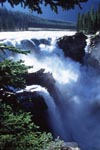
Why is storm water runoff a problem?
Storm water can pick up debris, chemicals, dirt, and other pollutants and flow into a storm sewer system or directly to a lake, stream, river, wetland, or coastal water. Anything that enters a storm sewer system is discharged untreated into the waterbodies we use for swimming, fishing and providing drinking water. The primary method to control storm water quality is through the use of best management practices.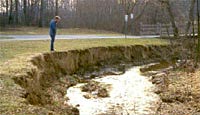
The effects of pollution...
Polluted storm water runoff can have many adverse effects on plants, fish, animals and people.Sediment can cloud the water and make it difficult or impossible for aquatic plants to grown. Sediment also can destroy aquatic habitats.
Excess nutrients can cause algae blooms. When algae die, they sink to the bottom and decompose in a process that removes oxygen from the water. Fish and other aquatic organisms can't exist in water with low dissolved oxygen levels.
Bacteria and other pathogens can wash into swimming areas and create health hazards, often making beach closures necessary.
Debris - plastic bags, six-pack rings, bottles, and cigarette butts - washed into waterbodies can choke, suffocate, or disable aquatic life like ducks, fish, turtles, and birds.
Household hazardous wastes like insecticides, pesticides, paint, solvents, used motor oil, and other auto fluids can poison aquatic life. Land animals and people can become sick from eating diseased fish and shellfish or ingesting polluted water.
Polluted storm water often affects drinking water sources. This, in turn, can affect human health and increase drinking water treatment costs.
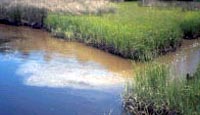
Most stormwater discharges are considered point sources and require coverage under a permit issued through the Stormwater NPDES permitting program. The Department of Environment and Natural Resources is the appointed agency to implement the storm water regulations in South Dakota. This agency also provides public assistance for >nonpoint source pollution.
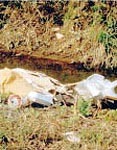
References
- "10 Things That You Can Do to Prevent Stormwater Runoff Pollution"
- Make Your Home the Solution to Stormwater Pollution Brochure
- Protecting Water Quality from Urban Runoff
- Water Efficient Landscaping
- Presentation explaining storm water regulations
- Photos of stormwater runoff, construction site runoff and public pollution problems
- USDOT FHWA Stormwater Best Management Practices
- Storm Water Best Management Practices in an Ultra-Urban Setting: Selection and Monitoring, USFHWA
- After the Storm Windows Media Video File (US EPA and The Weather Channel, 2004, 22 minutes)
(video may download depending on your browser)
Erosion & Sediment Control and Storm Water Management
Cost for Full Course: $150
AFE# for DOT - 73T0(zero)
This training is available for anyone interested in erosion and sediment control (ESC) requirements for SDDOT construction projects. The class covers ESC processes, best management practices (BMPs), regulatory & inspection requirements, and Storm Water Pollution Prevention Plans (SWPPPs).
Successful completion of this training will result in SDDOT Certification in Erosion and Sediment Control. Successful bidders of SDDOT construction contracts are required to have certified personnel responsible for the on-site erosion and sediment controls available at all times.
More information here: https://dot.sd.gov/doing-business/certification-accreditation/training#listItemLink_1569
Registration and Contact Information:
SDDOT employees, please register through the LMS. Include your name, employee ID number, telephone number and the name, date and location of the training. Contractors will need to email dotlms@state.sd.us or call 773.2371.
Erosion & Sediment Control and Storm Water Management Course Manual
SDDENR Storm Water Program website →
USEPA STORM WATER PROGRAM WEBSITE →
EPA'S NATIONAL MENU OF BEST PRACTICES FOR STORM WATER PHASE II →
INTERNATIONAL STORMWATER BEST MANAGEMENT PRACTICES (BMPS) DATABASE, SPONSORED BY THE AMERICAN SOCIETY OF CIVIL ENGINEERS (ASCE) AND THE U.S. ENVIRONMENTAL PROTECTION AGENCY (EPA). →
AASHTO CONSTRUCTION STORMWATER FIELD GUIDE →
AASHTO MAINTENANCE STORMWATER FIELD GUIDE →
CENTER FOR ENVIRONMENTAL EXCELLENCE BY AASHTO →
STORMWATER BEST MANAGEMENT PRACTICES IN AN ULTRA-URBAN SETTING: SELECTION AND MONITORING →
AASHTO Guidelines for Erosion and Sediment Control in Highway Construction, Volume III, 1999. ISBN: 1-56051-114-1. This guide requires purchase through the AASHTO bookstore.
Information or assistance with SDDOT-related stormwater activities is available by contacting the following:
© 2025 State of South Dakota. All Rights Reserved.
Becker-Hansen Building
700 E. Broadway Ave.
Pierre, SD 57501
Modern Logic
Region & Area Offices
Travelers
© 2025 State of South Dakota. All Rights Reserved.
Becker-Hansen Building
700 E. Broadway Ave.
Pierre, SD 57501
Modern Logic
